
1. Minimalist Zen Tranquility
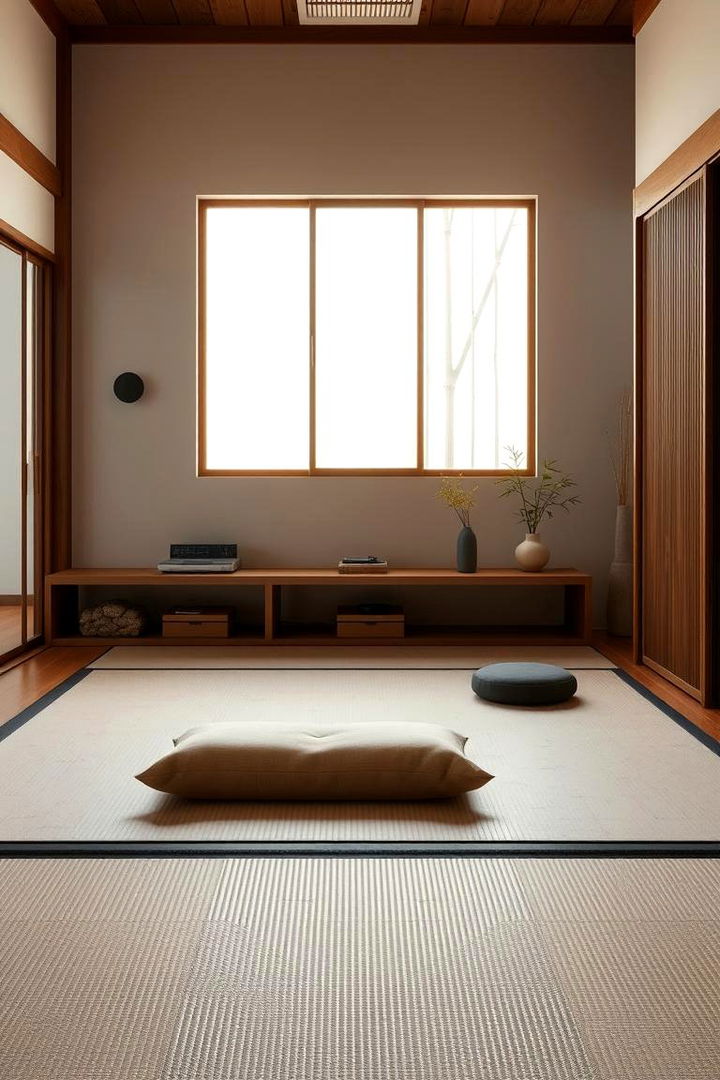
A gentle calm pervades a room designed for Zen tranquility, with clean lines and uncluttered spaces inspiring mental clarity. This design leverages natural materials like bamboo and light-toned wood to evoke peace and balance. Soft neutral hues and minimalist furnishings highlight a sense of spaciousness, while subtle green accents bring nature indoors. Embracing simplicity, this style creates an atmosphere that relieves stress and nurtures mindfulness. Consider incorporating low-maintenance decor and ambient lighting to enhance a soothing vibe, empowering you to cultivate a sanctuary of inner peace within your bedroom.
2. Natural Wood Warmth

With warm, earthy tones and natural textures, a Japanese bedroom featuring natural wood warmth invites comfort and authenticity. The integration of reclaimed wood, smooth bamboo floors, and subtle grain patterns creates an organic ambiance that reflects both tradition and modern design. Rich, warm hues blend with minimalist furnishings to generate a cozy environment ideal for relaxation. Practical storage solutions and soft textiles ensure the space remains uncluttered and inviting. Embrace nature-inspired decor to add depth and character, allowing your bedroom to become an oasis of calm where every wooden detail contributes to an enduring sense of welcome.
3. Sliding Shoji Elegance
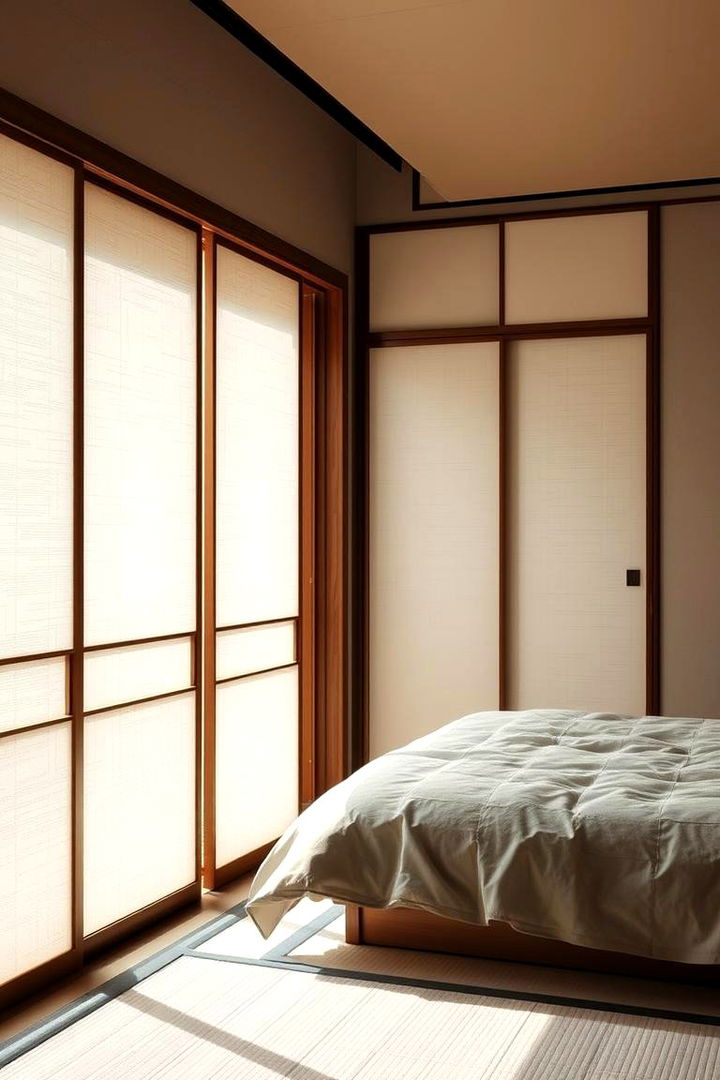
Consider the timeless elegance of sliding shoji screens that transform your bedroom into a light-filled retreat with soft, diffused illumination. These delicate partitions, crafted from rice paper and wooden frames, create distinct zones without sacrificing openness. The interplay of natural light and refined textures encourages a versatile design that balances privacy with an airy feel. Layer your interior with cozy tatami mats and low-profile furnishings for enhanced tranquility. This aesthetic offers flexibility, allowing you to adjust the ambiance for various moods while maintaining the core principles of Japanese design and achieving an exquisite blend of beauty and function.
4. Modern Japanese Fusion
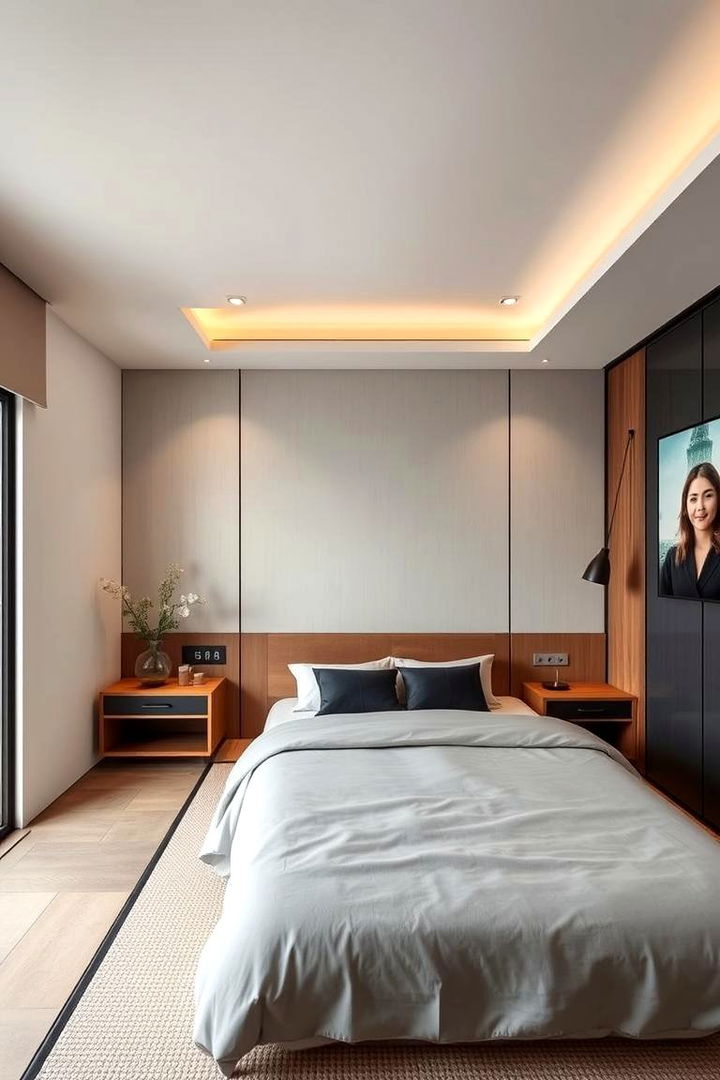
Moreover, modern Japanese fusion breathes fresh energy into bedroom spaces by seamlessly blending traditional elements with contemporary design. This unique approach combines sleek furniture, innovative lighting, and minimalist décor with classic Japanese accents, such as tatami mats and shoji screens. The result is a balanced and functional space that appeals to both modern sensibilities and cultural heritage. Emphasize open floor plans and multifunctional elements that cater to your daily needs. The fusion delivers thoughtful, practical improvements that maintain artistic integrity and evoke a stimulating yet serene environment uniquely tailored for modern lifestyles.
5. Traditional Tatami Touch

Unlike many conventional designs, a bedroom with a traditional tatami touch exudes calm and rooted authenticity. Incorporating tatami mats, woven textures, and subtle patterns evokes the spirit of time-honored Japanese aesthetics. The natural fiber mats and soft ambient lighting create a warm, inviting environment conducive to rest and meditate. Minimalist decor and low furniture models emphasize functionality and simplicity. This style not only respects cultural heritage but also optimizes space utility and creates a soothing atmosphere that encourages personal reflection and relaxation. With thoughtful placement of essential elements, every detail contributes to a balanced, serene retreat.
6. Artful Ikebana Displays
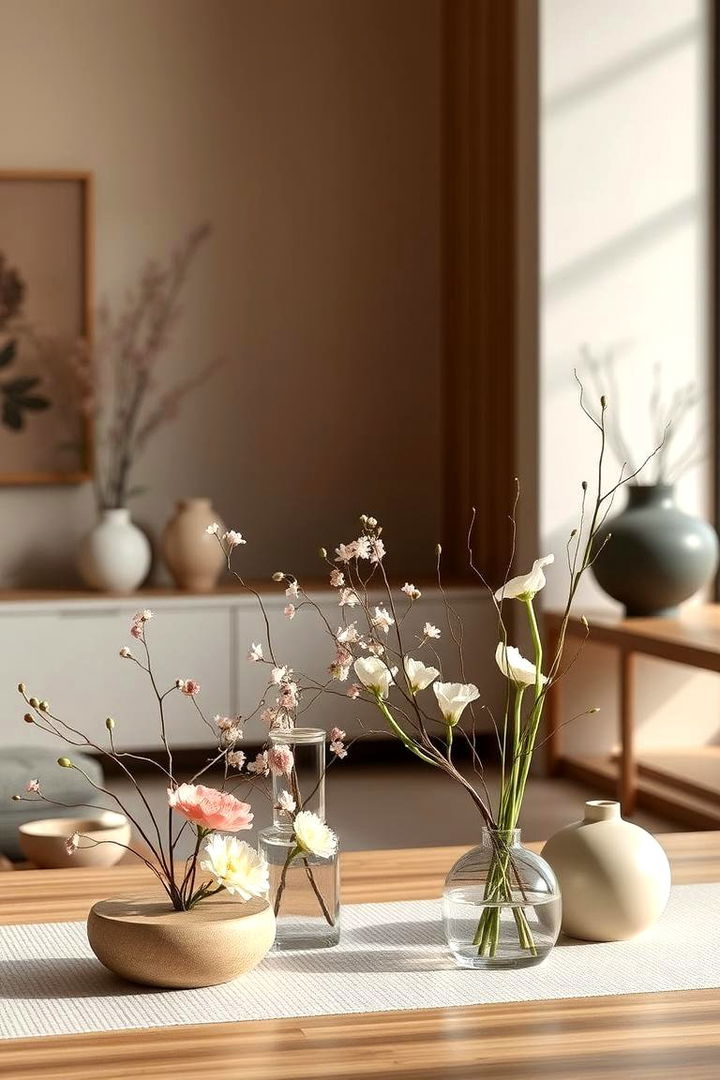
With an appreciation for nature’s artistry, artful ikebana displays bring the beauty of floral arrangements into the bedroom. This design idea celebrates simplicity and balance, encouraging the inclusion of carefully curated flower arrangements that enhance the room’s natural charm. Each ikebana piece acts as a focal point, infusing color and life into the space while maintaining a refined, understated feel. Delicate vases and natural textures complement the design, creating an inviting environment that promotes mindfulness. Actionable design tips include selecting seasonal blooms to refresh the atmosphere and introduce a dynamic, ever-changing element to your personal haven.
7. Serene Neutral Palettes
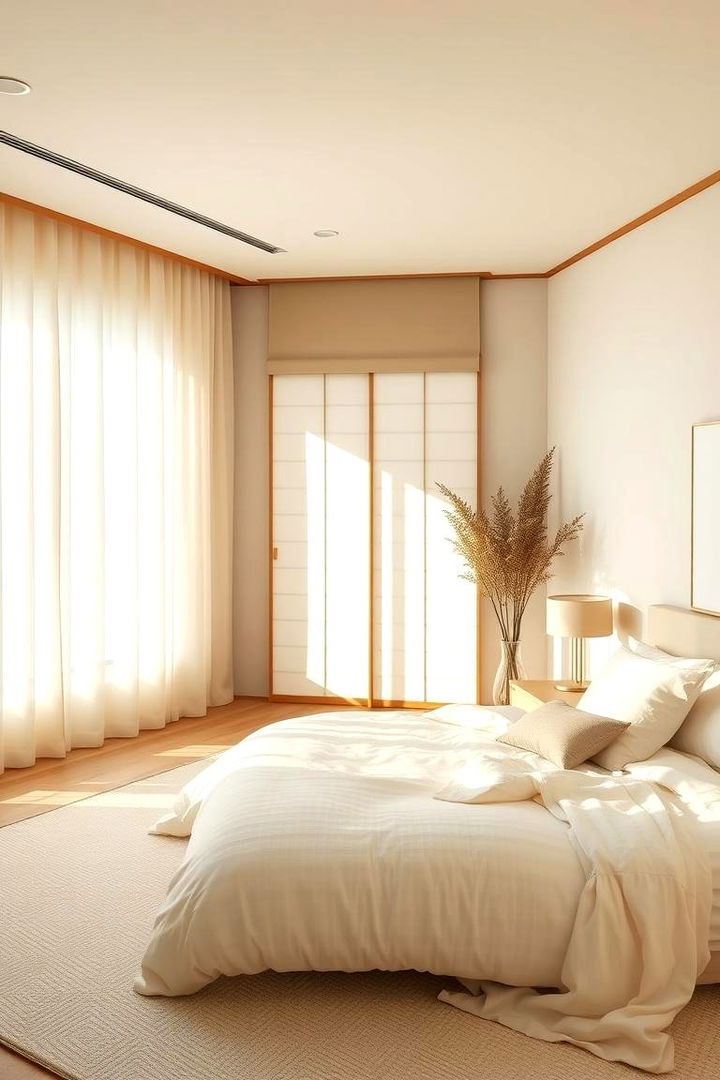
To evoke a tranquil haven, serene neutral palettes dominate Japanese-inspired bedrooms, radiating simplicity and calm. Soft beiges, creams, and subtle grays create an atmosphere that allows natural light to amplify the room’s openness. The monochromatic scheme is enhanced by natural elements like wood and stone, establishing a peaceful foundation for any decor. Complement the subtle backdrop with artistic accents or handcrafted items that speak to cultural authenticity. This color approach not only soothes the eyes but also encourages mental relaxation and clarity. Consider layering textures to add visual interest while maintaining a harmonious and uncluttered space for rejuvenation.
8. Futon and Floor Seating Comfort

A focus on futon and floor seating comfort reinvents the conventional bedroom with a uniquely Japanese twist. The low-profile futon, paired with minimalist floor cushions, encourages flexibility in living and sleeping arrangements. This design emphasizes simplicity and functionality by eliminating bulky traditional beds and creating a versatile space for meditation, reading, or relaxing. Soft fabrics, natural dyes, and complementary tatami mats instill an authentic, cozy ambiance. The ease of rearrangement allows for dynamic space usage. Engage with practical storage and multipurpose furniture to enhance comfort while preserving the open, inviting aesthetic integral to Japanese bedroom design.
9. Hidden Storage Solutions
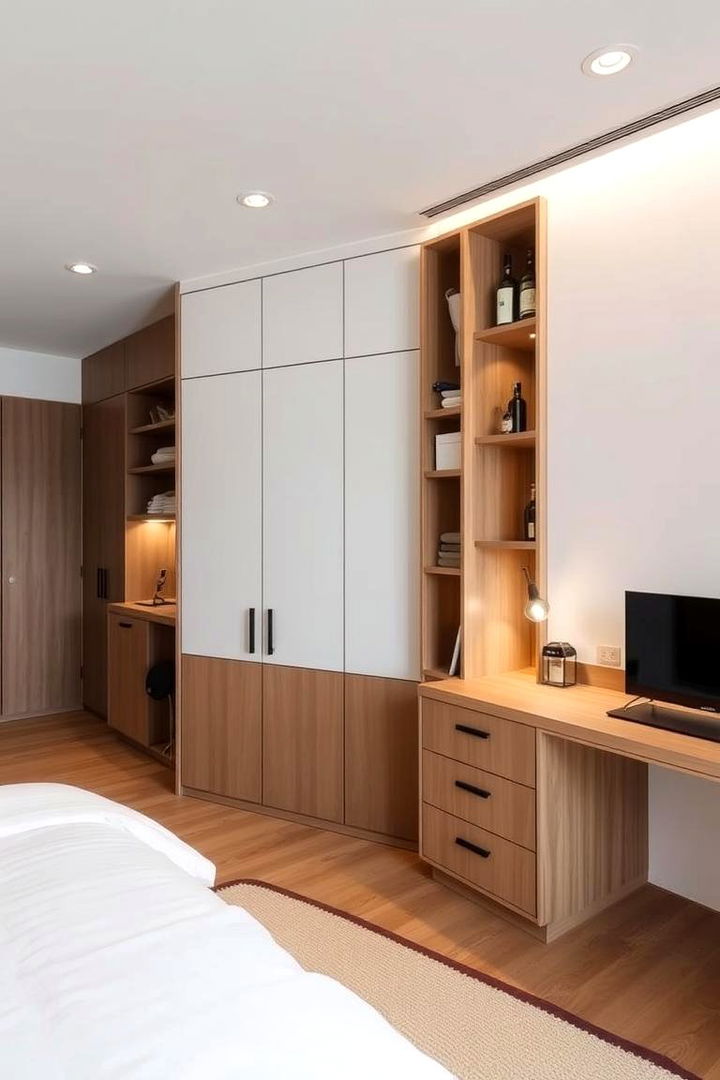
Additionally, hidden storage solutions cleverly blend modern functionality with Japanese minimalism by concealing clutter and maximizing space. Thoughtfully integrated cabinetry and under-floor compartments create a seamless look while keeping essential items neatly stored. This design prioritizes clean lines and a clutter-free environment, enabling the calming influence of simplicity to flourish. Practical tips include selecting modular systems that adapt to changing needs and employing built-in shelves that merge with natural wooden finishes. The result is a streamlined, organized bedroom that combines aesthetic appeal with efficient use of space, empowering you to maintain a serene and orderly living environment effortlessly.
10. Paper Lantern Lighting
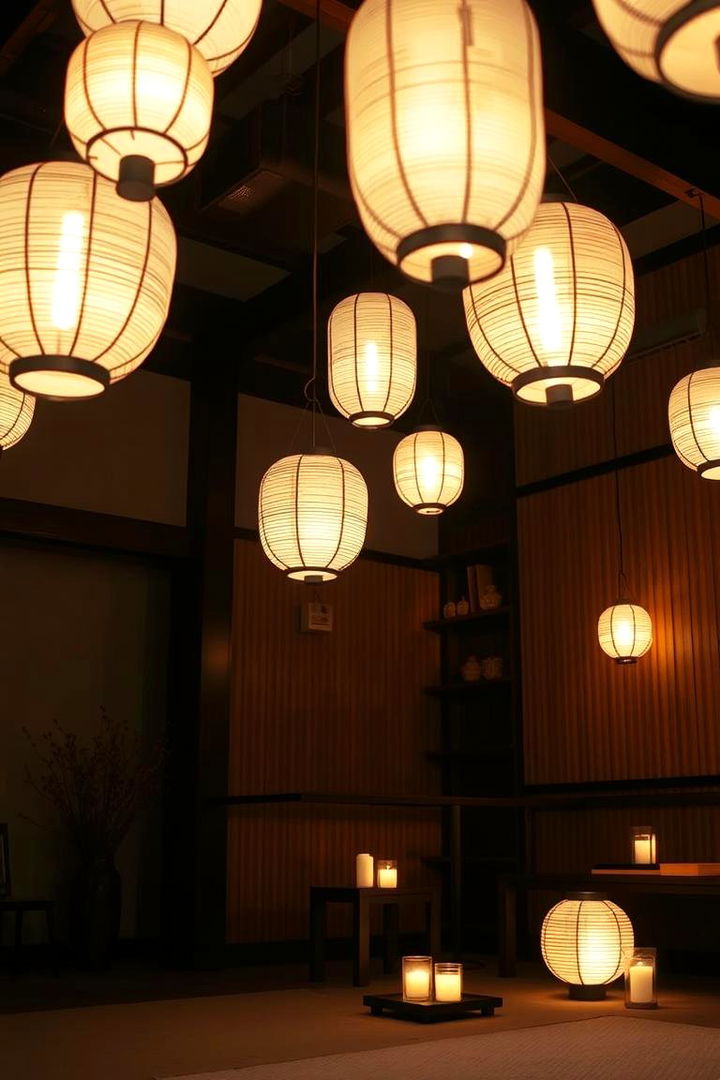
Thus, paper lantern lighting introduces a warm, enchanting glow that transforms a bedroom into a cozy retreat. The soft, diffused light emanating from traditional lantern designs creates an inviting atmosphere perfect for relaxation and reflection. Incorporating paper lanterns with minimalist fixtures can accentuate architectural details and subtly highlight traditional patterns in the room. This lighting solution balances modern electrical efficiency with time-honored artisanal methods, curating both ambiance and style. Embrace layered lighting options that allow you to control brightness and mood, and let each paper lantern add a delicate touch of history and elegance to your personal space.
11. Low-Profile Furniture Simplicity
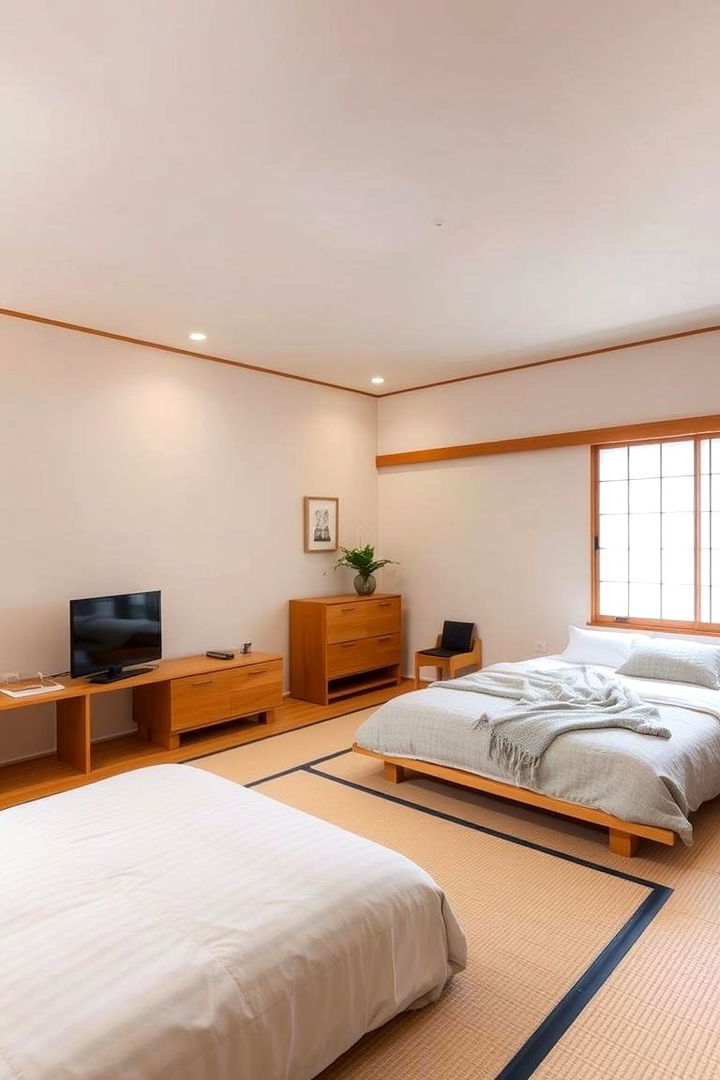
At the heart of low-profile furniture simplicity lies a design that champions uncluttered spaces and functional elegance. Integrating furniture with low heights and minimal ornamentation creates a sense of openness and unifies the overall look with subtle refinement. Soft, natural materials such as light woods and neutral fabrics increase comfort while emphasizing practical storage and fluid floor plans. This approach eliminates unnecessary bulk, allowing natural elements like tatami and shoji panels to shine. The strategy not only maximizes space but also fosters mental clarity. Incorporate modular pieces to adapt to your daily needs, ensuring both style and functionality flourish harmoniously.
12. Nature-Inspired Accents
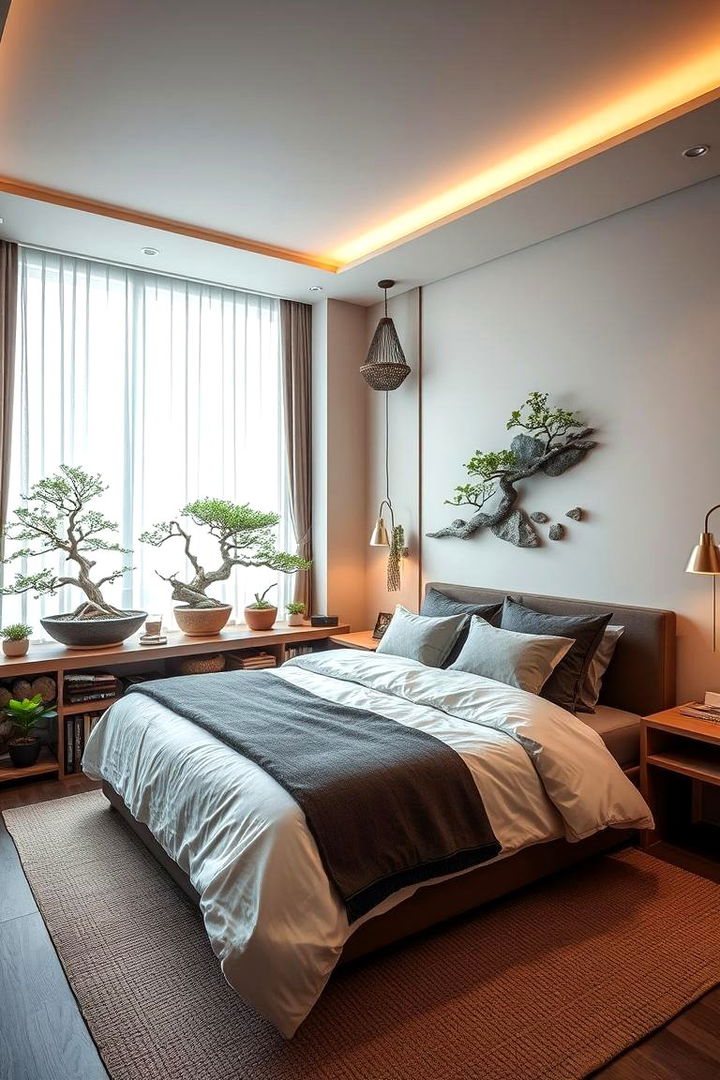
With nature-inspired accents, a Japanese bedroom transforms into an organic retreat by incorporating elements that echo the outdoors. Integrate stone features, bonsai displays, and muted greenery to evoke the serene beauty of natural landscapes. Soft lighting, organic textures, and natural materials like wood and bamboo infuse the space with tranquility. This design emphasizes harmony, using handcrafted decor and artisan techniques to create a tactile and emotional connection with nature. Simple additions such as fresh plants or natural water features further enrich the ambiance, providing not only aesthetic appeal but also a sense of grounding and balance in your personal sanctuary.
13. Japanese Tea Corner
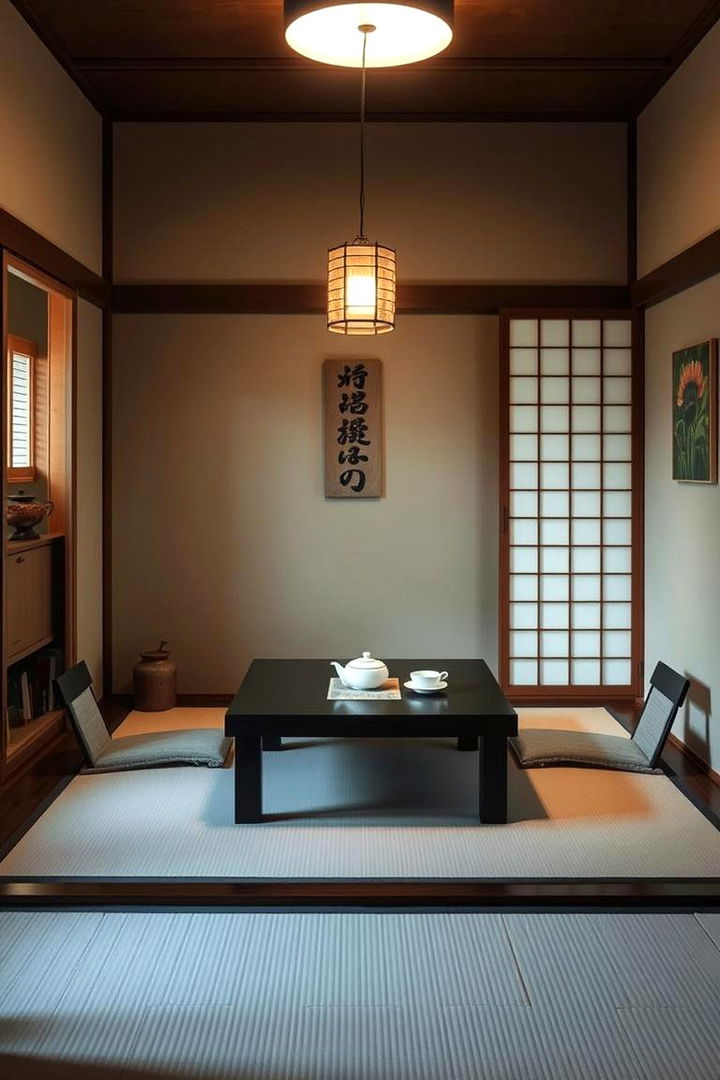
Consider a Japanese tea corner as a dedicated nook for mindful relaxation and artistry. A small space adorned with low tables, tatami mats, and carefully selected tea accessories creates a specialized area to unwind and appreciate traditional rituals. This design incorporates subtle lighting, natural woods, and soft textures that complement the overall theme. The setup encourages meditation, relaxation, and social gatherings while celebrating cultural traditions. Practical advice includes utilizing multifunctional furniture to maximize utility without sacrificing style. Infuse the area with personal touches that honor the heritage of Japanese tea ceremonies, transforming your bedroom into an environment for contemplation and refined leisure.
14. Serene Garden Views
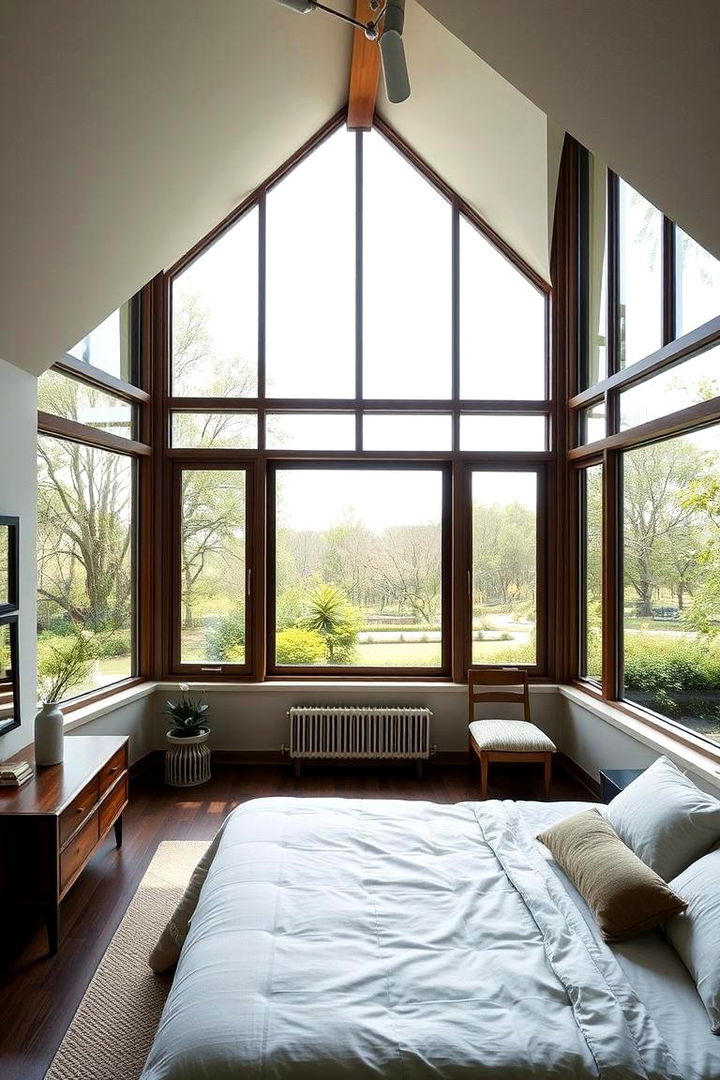
Surrounded by natural elements, serene garden views invite the outdoors into the bedroom, fostering an atmosphere of calm and rejuvenation. Large windows, sliding glass panels, or traditional shoji screens offer unobstructed vistas of meticulously landscaped gardens. The interplay of natural light and organic textures creates a soothing backdrop that supports relaxation and introspection. Enhance the design with subtle greenery and water features, integrating nature seamlessly into the living space. By merging indoor and outdoor worlds, this aesthetic not only elevates visual appeal but also provides a continuous connection to natural beauty, encouraging a peaceful balance between urban living and nature’s elegance.
15. Rice Paper Dividers
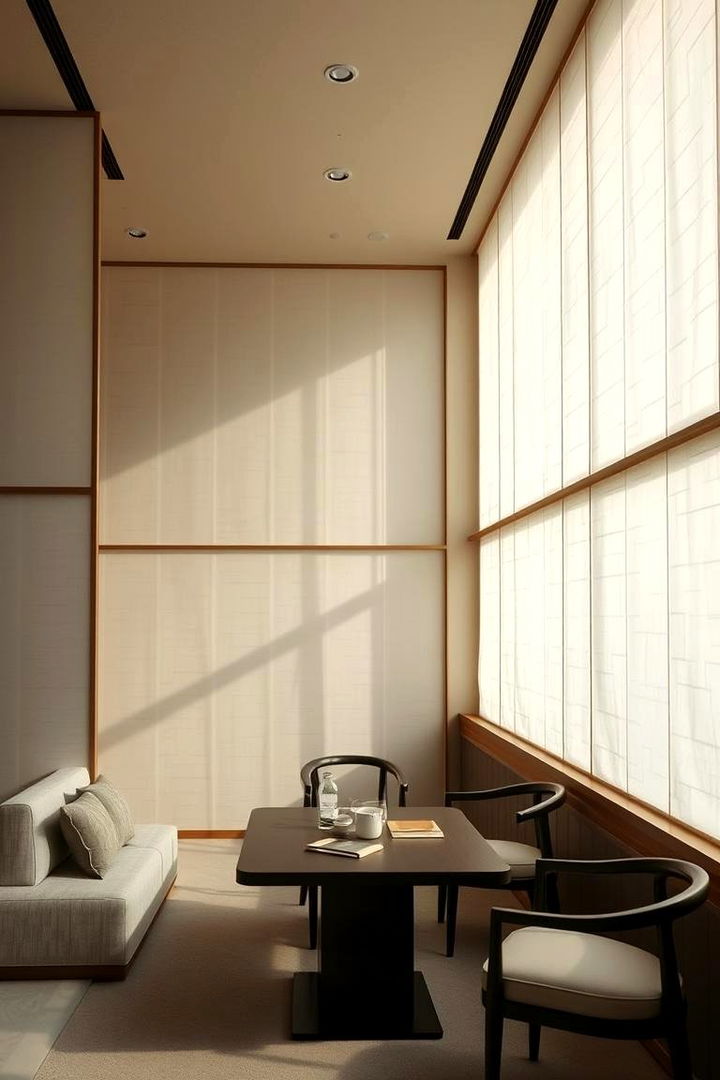
However, rice paper dividers serve as elegant room separators that maintain privacy while preserving an open, airy feel. These delicate partitions, characterized by translucent textures and minimalist frames, allow gentle light diffusion and subtle color shifts. The soft glow these dividers create establishes an inviting ambiance that is both functional and artistic. They act as the perfect backdrop for other minimalist elements, such as low-profile furniture and natural finishes, ensuring every detail enhances the room’s calm aesthetic. Practical design tips include repositioning dividers to modify space usage while maintaining the inherent charm and flexibility that rice paper uniquely offers in conceptual bedroom settings.
16. Aesthetic Simplicity and Balance
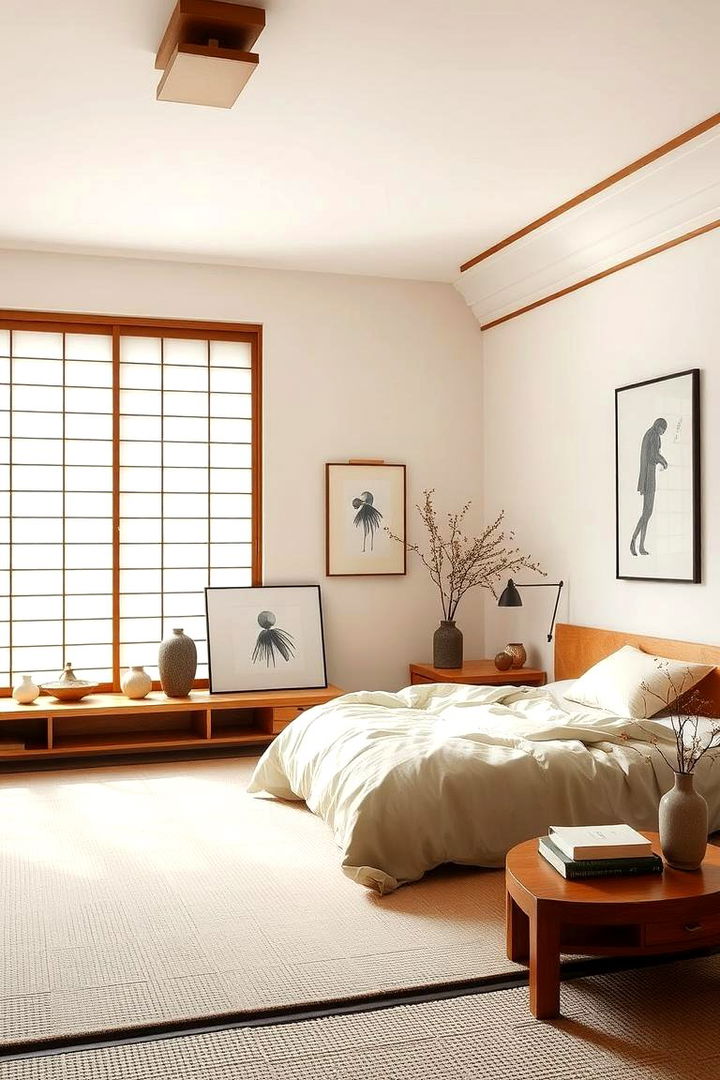
To foster a sense of aesthetic simplicity and balance, this design concept emphasizes clean lines and uncluttered spaces enriched with soft, natural hues. A mindful arrangement of carefully chosen decor accentuates symmetry and order. The harmonious blend of refined elements—such as simple textiles, understated art pieces, and natural finishes—creates a visually appealing and stress-free retreat. Each component works harmoniously to amplify calm and reinforce a feeling of order, helping you create a personal sanctuary that reflects inner peace. Practical strategies include decluttering surfaces and selecting easily maintained accents that contribute to an overall balanced and inviting ambiance.
17. Rustic Japanese Charm

Surprisingly, rustic Japanese charm infuses a bedroom with character and warmth through the use of aged wood, distressed finishes, and traditional handcrafted details. This design emphasizes authenticity and cultural heritage by incorporating elements that convey history and simplicity. Warm, earthy tones and natural textures create a relaxed atmosphere where rustic accents blend with modern minimalism. Complement the design with vintage decor pieces and artisanal crafts to maintain an intimate, lived-in feel. Every detail, from weathered wood panels to hand-stitched fabrics, narrates a story that enriches the space with character while inviting relaxation and nostalgic comfort.
18. Modern Minimalist Accents
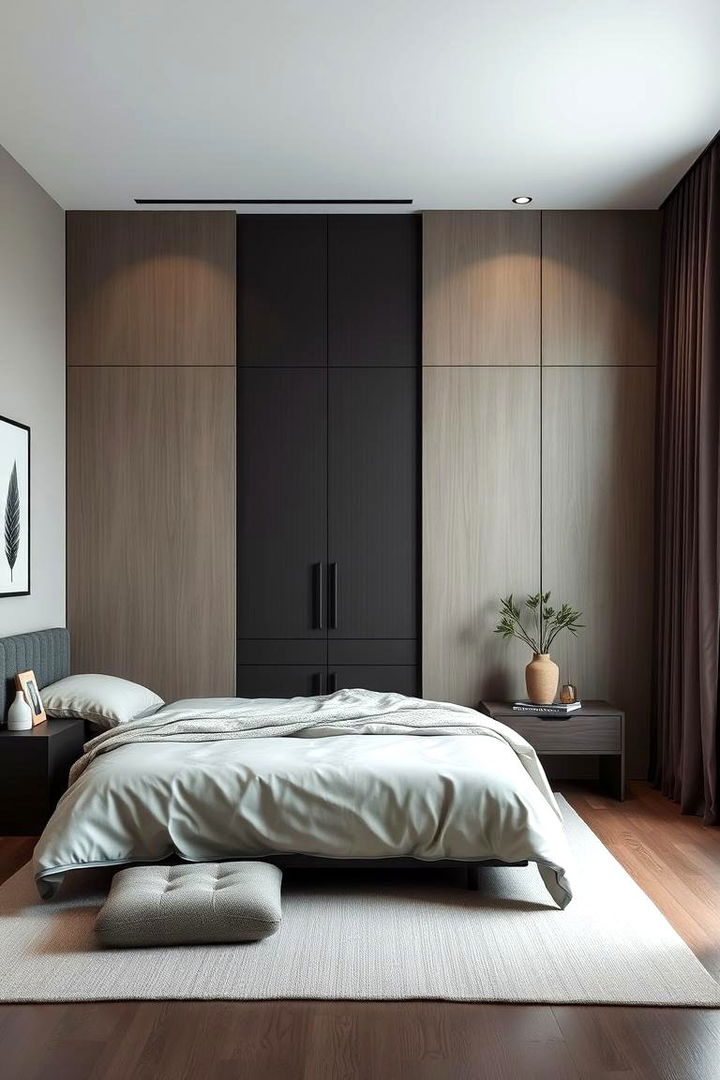
With a focus on modern minimalist accents, this design enlivens your bedroom by blending clean aesthetics with functional innovations. Streamlined lines, muted color schemes, and strategically placed art pieces create an uncluttered yet stylish environment. Emphasizing practicality and elegance, the design integrates smart storage solutions and multipurpose furniture while preserving a sense of spatial freedom. Each element is carefully chosen to complement the overall minimalist theme without overpowering it, ensuring the room remains both aesthetically pleasing and functional. Incorporate technology subtly to enhance everyday convenience, supporting a serene, modern retreat that celebrates clarity and thoughtful design.
19. Harmony Through Zen Details
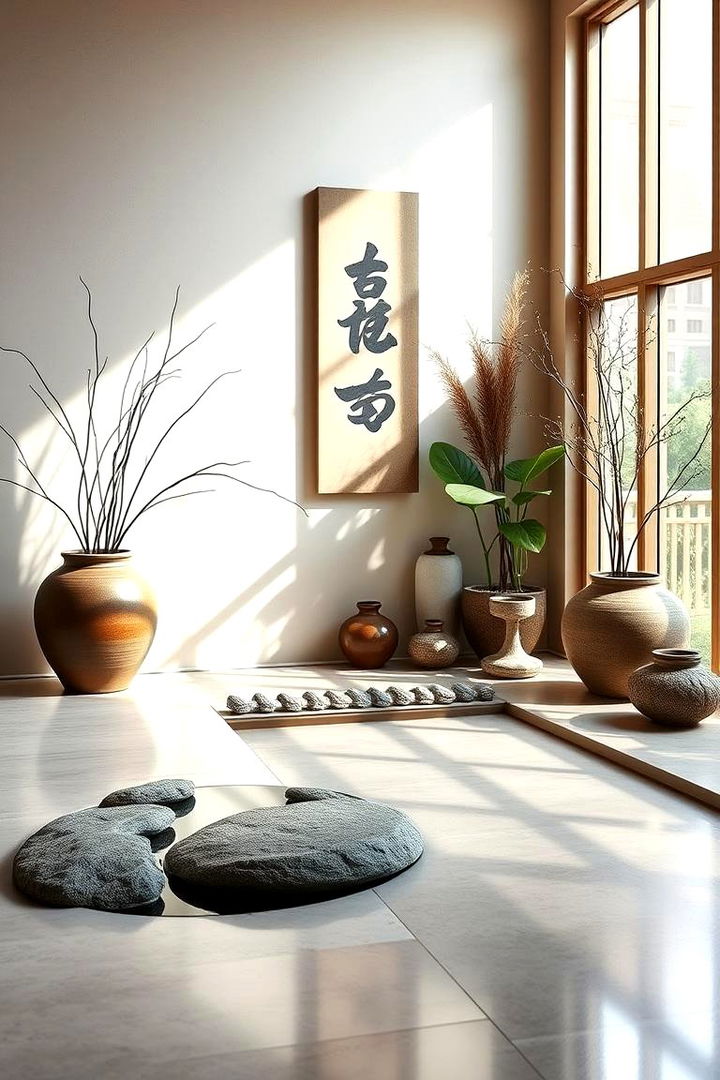
What better way to achieve balance than by incorporating harmony through Zen details within your personal bedroom retreat? This design approach utilizes subtle touches such as handcrafted ornaments, gentle water features, and asymmetrical art to celebrate imperfection and balance. These intentional details evoke feelings of serenity and mindfulness unique to Japanese aesthetics, allowing each item to tell its story. The careful juxtaposition of functionality with art provides a layered yet uncluttered feel. Practical tips include integrating natural materials and artisanal crafts that reflect a deep respect for simplicity and harmony, ultimately fostering a peaceful retreat that nurtures both body and spirit.
20. Elegant Textured Accents
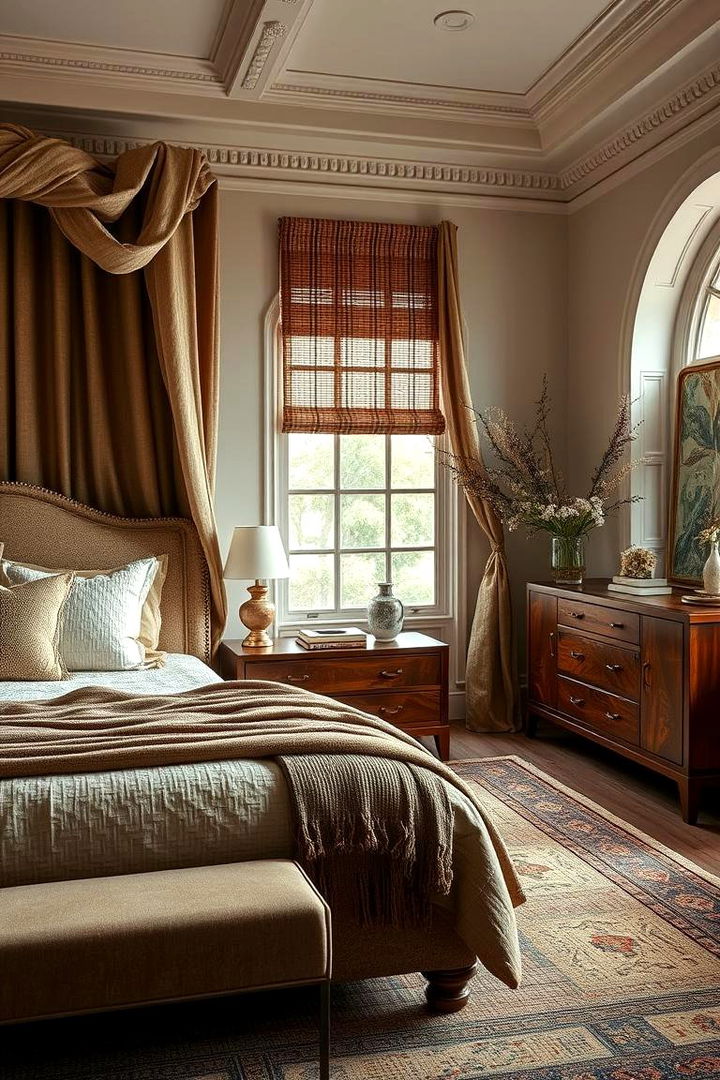
By layering elegant textured accents, this design concept transforms the bedroom into a tactile experience that balances simplicity with sophistication. Varied fabrics, woven details, and natural grains add depth and dimension to an otherwise minimalist setting. The interplay between smooth surfaces and tactile textures creates a rich sensory environment, inviting you to explore each detail with visual and emotional interest. Accentuate the interplay of materials with carefully chosen furniture and decor that complement the natural elements inherent to Japanese design. This approach lends warmth and character to the space while promoting a harmonious blend of form and function that encourages relaxation and refined living.
21. Compact Smart Designs
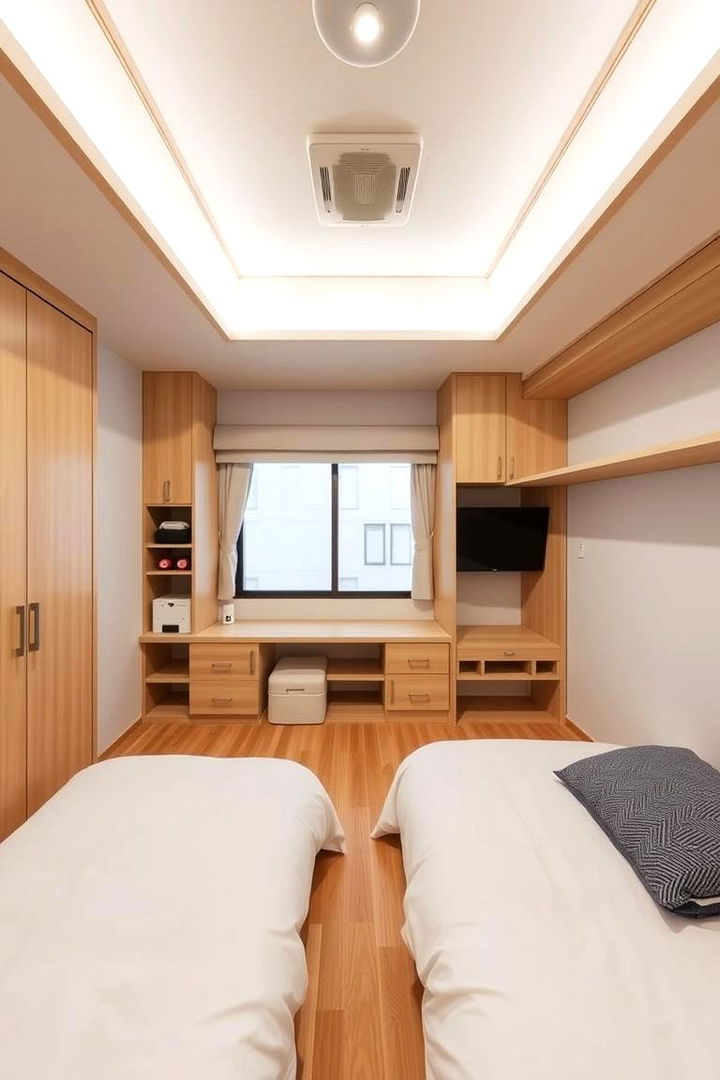
At the heart of compact smart designs lies an efficient use of limited space through innovative, multifunctional elements that embody Japanese ingenuity. This strategy focuses on maximizing every square inch without sacrificing the serene ambiance intrinsic to traditional aesthetics. Clever built-in storage, foldable furniture, and ergonomic layouts ensure optimal functionality in small spaces. Maintaining minimalist decor alongside state-of-the-art solutions, the design encourages both practicality and beauty. Each piece is selected to offer ease, flexibility, and a calming environment, perfect for urban lifestyles. Incorporate smart designs to achieve a clutter-free, serene retreat that effortlessly adapts to daily needs.
22. Functional Art Installations

Finally, functional art installations combine creativity and practicality to transform your bedroom into an inspiring space that is both aesthetically pleasing and highly usable. These installations use interactive elements, sculptural pieces, or multipurpose wall art to infuse the room with personality and charm. Embracing a fusion of art and design, each installation provides a conversation piece that enhances the overall visual narrative of the bedroom. Smartly chosen elements not only contribute decorative appeal but also serve daily functions, reinforcing the balance between beauty and utility. This imaginative approach encourages self-expression while maintaining the design principles of elegance and simplicity, leaving a lasting impression on all who enter.
Conclusion:
Summing up, these ideas weave together the serene principles of Japanese design with modern functionality to create a bedroom that’s both inviting and deeply personal. The blend of natural materials, minimalist accents, and thoughtful spaces speaks to the enduring power of simplicity and balance. Every idea, from traditional tatami touches to functional art installations, inspires a transformation that caters to comfort and aesthetic pleasure. Embrace these insights to cultivate a sanctuary that reflects inner harmony, and let the spirit of Japanese design elevate your space with creative charm and tranquil elegance.












